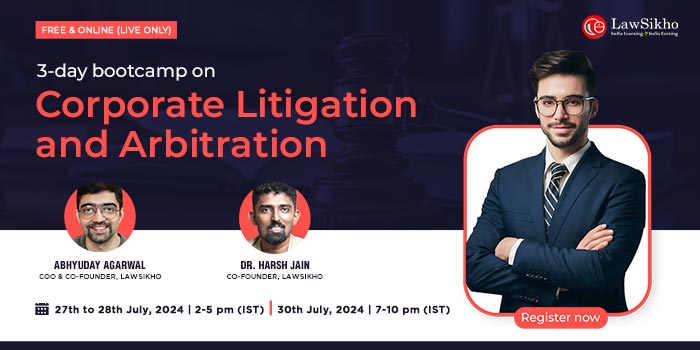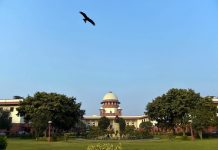This article was written by Nimisha Dublish. The article is an analysis of the very infamous case of KM Nanavati v. The State of Maharashtra. The case already inspired the judiciary as well as our film industry to show the readers its intricacies and how the case turned out to be an interesting interplay of emotions, justice, media roles and reality.
This article has been published by Shashwat Kaushik.
Table of Contents
Introduction
In this article, we will discuss the intricacies of the infamous case of Naval Officer KM Nanavati. The case became so famous that many TV series and movies were made about it. Each TV series and movie depicts the narrative of each party. We are going to explore the complexities of the case and its impact on Indian society. We will go through compelling narratives of the parties presented in the case and debates that were all around the nation and judicial system regarding grave and sudden provocation. The story of this case still continues to resonate with generations as to how truth, passion and justice collide in a case. The case received unprecedented media coverage. It is also known to be the last case to be heard as a jury trial in India since the government abolished the jury system as a result of this case.
Facts of K.M. Nanavati v. The State of Maharashtra
Kawas Manekshaw Nanavati 1925-2003 was a Parsi and a commander in the Indian Navy. He was second in command of the Indian Navy and was posted in Mysore. He settled in Bombay with his wife, Sylvia and their two sons and one daughter. Sylvia was a citizen of England.
Due to the nature of Nanavati’s job, he had to travel from Bombay to various other parts, leaving his wife and children behind. In Bombay, Nanavati was introduced to Prem Bhagwandas Ahuja and his sister Mimi Ahuja because of a consignment related to the purchase of a naval ship. With the passage of time when Nanavati used to be away from Bombay, the relationship between Sylvia and Prem Ahuja grew stronger, and they got into an adulterous relationship.
One usual day, when Nanavati returned to Bombay, he tried getting close to his wife. However, Sylvia refused to get close to him and started behaving in a rude manner. Nanavati, at first, let that go. However, when he noticed that this had become a pattern and Sylvia continued to behave distantly, he got confused and doubted her loyalty to him.
One fine day on April 29, 1959, Nanavati broke this silence and questioned Sylvia about her strange behaviour. She confessed everything to him about her relationship with Prem. After hearing this, he took his family to the Metro Cinema for the film Tom Thumb, which he had promised to take them to. He then headed to confront Prem. Nanavati went to the naval base and collected his gun on a false pretext. He took the pistol along with six bullets. He completed the formalities and decided to head towards Prem Ahuja’s office after it. He informed the authorities that he was to drive alone to Ahmednagar by night and would need the pistol for safety purposes, but he didn’t disclose his true intention. He put both the revolver and six cartridges in a brown envelope.
After the completion of official duties, he headed towards Ahuja’s office. After not finding him there, he went to his house and had a verbal confrontation with him. Nanavati said that he asked him to marry Sylvia and accept their children. To which Prem Ahuja replied negatively, three shots were fired, and he was found dead. Nanavati was emotionally weak at that moment and thought nothing beyond securing the future of his wife and children. He expected that Prem Ahuja might agree to marry Sylvia and take custody of his children, but when Nanavati questioned him, he allegedly said, “Am I supposed to marry every woman I sleep with?” To this, Nanavati got triggered and this statement of Ahuja provoked Nanavati. Upon knowing that Prem Ahuja does not respect Sylvia and does not at all care about her, Nanavati got into an argument with Prem Ahuja. As a result, they got into a scuffle, and eventually, bullet shots were fired.
After the event, Nanavati surrendered to the Deputy Commissioner of Police. The jury gave a verdict of 8:1, holding him not guilty under Section 302 of the Indian Penal Code. This particular Section prescribes that anyone who commits murder will either be punished with the death penalty, life imprisonment, or a fine. He got a majority of 8 votes by the jury and only 1 vote was against the majority decision of the jury. However, the judge was not satisfied with the jury’s verdict and referred the case to the Bombay High Court under Section 307 of the Code of Criminal Procedure, CrPC. Section 307 prescribes that at any point between the initiation of a case and the issuance of a judgement, the Court may offer a pardon to any individual who is believed to have been directly or indirectly involved in the offence under consideration.
On reviewing the case, the High Court of Bombay overturned the decision of the jury and Nanavati was held guilty of the said offence under Section 302 of the Indian Penal Code. Subsequently, an appeal was filed before the Supreme Court of India.
Contentions of both parties in K.M. Nanavati v. The State of Maharashtra
Contentions of the petitioner
The counsel of Nanavati put forth his contention that after Nanavati heard the confession made by Sylvia, he wanted to kill himself. However, Sylvia managed to calm him down. After this, Nanavati wanted to know whether or not Prem Ahuja was ready to marry her. He dropped his wife and children at the movie theatre and went to the ship in his car.
After informing the ship authority that he wanted his revolver along with six rounds, he went off. He gave the reason that he was to drive alone to Ahmednagar by night and didn’t disclose his true intention. He put both the revolver and six cartridges in a brown envelope.
Nanavati went to Ahuja’s office, but he was not there, so he went to Ahuja’s flat. Upon reaching there, Ahuja’s servant unlocked the door, and Nanvati straight away walked towards Ahuja’s bedroom. He closed the door behind him and also carried the envelope containing a revolver and six bullets.
When Nanavati saw Ahuja inside the bedroom, he labelled him a dirty swine and asked if he would marry Sylvia and care for the children. Ahuja raged and said, “Am I supposed to marry every woman I sleep with?” To this Nanavati threatened to thrash him. When Prem Ahuja made a sudden grab at the envelope, Nanavati drew his revolver and asked Ahuja to back off. As a result, a scuffle arose between them, and during the struggle, two bullet shots were mistakenly fired, which led to the death of Prem Ahuja.
Nanavati, after the whole event took place, drove to the police station and surrendered himself. Hence, the petitioner’s shot at Prem Ahuja was a result of grave and sudden provocation, and he would be liable for culpable homicide not amounting to murder.
Contentions of the respondent
The respondent’s very first disagreement was on the point that Prem Ahuja had just gotten out of the shower and his towel was still intact. It was still on his body when it was discovered. It has not fallen, which is quite surprising because Nanavati and Prem Ahuja had a scuffle between them.
After Sylvia confesses to Nanavati, he calmly drives them to the movie theatre and drops them there. After this, he went to his ship and got the revolver on a false pretence. This clearly shows that he had sufficient time to cool down and that the provocation was neither grave nor sudden. Nanavati had premeditated the murder on his way.
Anjani Prem Ahuja’s servant was a natural witness who was present there and opened the door for Nanavati. He said that four shots were fired in rapid succession, and the entire event took place in less than a minute. Hence, it shows that no scuffle took place.
Nanavati, after shooting Prem Ahuja, left the place without informing his sister, who was present in the room next to him. If it was an accident, Nanavati must have informed her. As per the statement of the Deputy Commissioner of Police, Nanavati admitted that he shot Ahuja and even corrected his name, which was misspelt in the police record, which demonstrated that he was capable of thinking normally at that moment.
Issues before the Court
- Whether the High Court lacked jurisdiction under Section 307 of the CrPC to examine the facts in order to determine the competency of the Sessions Judge’s referral.
- Whether the High Court had the power to strike aside a jury’s decision on the grounds of misdirection in charge under Section 3073 of the CrPC.
- Whether there were any misdirections in the charge.
- Whether the jury’s decision was such that it might have been reached by a group of reasonable men based on the facts presented to them.
- Whether the act was done in “the heat of the moment” or whether it was a premeditated murder?
- Whether the pardoning power of the Governor and the Special Leave Petition can be clubbed together?
Tests and rules applied in K.M. Nanavati v. The State of Maharashtra
Test for grave and sudden provocation
The test involves the question of whether a reasonable man who belongs to the same class of society, would be provoked to act in the same way as the accused would in the same situation. The test when applied in India, also involves the gestures, words and former mental background developed by the victim. There must be sudden provocation, and the fatal blow must be a result of it. There should be no time for the calculation of the actions or any premeditation.
The rule applied and the cases referred
In Mancini v. Director of Public Prosecutions (1941), the court addressed the issue of whether the provocation could mitigate the charge of murder to manslaughter. The court noticed that when the provocation incites the intention to kill or cause grievous harm, the chances of applying the legal principle of reducing the murder to manslaughter rarely apply. This means that if a person, in the heat of passion triggered by sudden and grave provocation, forms an intention to kill or cause serious bodily harm, then the offence is more likely to be considered murder and not manslaughter.
The court also referred to the case of Attygalle v. Emperor (1936) to prove the burden of proof on the prosecution. In case of proof relating to the absence of an accident, Section 80 of the Indian Penal Code, 1860 is to be referred, notwithstanding the provisions under Section 105 of the Indian Evidence Act. Section 80 of the IPC is a general exception, it states that an act cannot be considered an offence if it is done accidentally or due to misfortune, given that there was no criminal intention or awareness of the same. The act must be done while engaging in a lawful activity by lawful means while exercising proper care and attention. If someone unintentionally commits an act while lawfully carrying out his/her duties without any criminal intention, then that person shall not be punishable under this Section. Section 105 of the Indian Evidence Act means that whenever an accused is charged with any criminal act, the burden of proof, under any of the general exceptions provided under the IPC or any other special laws, is upon the accused. The burden lies on the prosecution to prove the absence of the accident. This means that when a person claims that the act was done by accident, then, as provided under Section 80 of the IPC, it is the responsibility of the prosecution to prove beyond a reasonable doubt that the offence was not the result of the accident. This provision ensures that the prosecution bears the onus of proof. It upholds the presumption of innocence and the principles of a fair trial by the Court.
In the case of Empress v. Khogayi (1879), the court held that the use of abusive language constitutes a sufficient provocation to deprive a person of self-control. This judgement significantly highlights the cause and effect of verbal provocation and how the use of abusive language can provoke a person enough to lead them to commit an impulsive or violent act. This highlights the broader understanding of provocation under the umbrella of both verbal and physical provocation.
Test of Jury Trials
One of the most notable events that took place in this case was the utilisation of jury trials. This was inherited from the British legal system. In a jury trial, there is a group of citizens, which is typically 12 in number, and they have the responsibility of determining the guilt of the accused. The trial proceeds as a normal proceeding, like presenting evidence and arguments. However, in this case, we saw both the strengths and weaknesses of the jury trial in India. The jury provided diverse opinions in this case in order to promote the fairness and legitimacy of the trial. On the other hand, the case attracted immense public attention and media scrutiny. Every action of the parties and jury was being captured by the media. The case attracted a whole lot of media coverage. This was considered an influence on the jury. The complexity of the case and its emotional nature posed many challenges for the jury to arrive at a decision.
Despite the majority decision of an 8:1 vote for the acquittal, the presiding judge, Hon’ble Mr. Justice Ratilal Bhaichand Mehta, referred the case to the High Court for further review. The case served as a litmus test for the efficacy of the jury trial system in India.
The rule applied and the cases referred
In the case of Ramanugrah Singh v. King Emperor (1946), the court highlighted the words ‘the ends of justice’, this meant that the judge must be convinced that the verdict given by the jury is such that it cannot be reasonably concluded by a reasonable man. The judge must assess the decision of the jury and check whether it aligns with the principles of justice and reasonableness or not.
In the case of Emperor v. Ramadhar Kurmi (1946), the authority of the High Court to intervene in the decision of the jury was questioned. The High Court holds an inherent power to intervene in cases only when the jury’s decision is on the basis of grave misdirections. This implies that if the decision of the jury is influenced by such errors and misconceptions, then the High Court has the jurisdiction to review and overturn the verdict of the jury. This is to safeguard the integrity of the judicial proceedings and ensure that justice is delivered and duly J.J.ved.
High Court’s decision
The division bench of the High Court of Bombay consisted of Shelat and Naik, J.J, who heard the case. However, both judges gave separate decisions on the case, but later both of them agreed that the accused was guilty of murder under Section 302 of the Indian Penal Code. He should be imprisoned for life. They concluded that the jury had been misled, and judges, after evaluating complete evidence, concluded that Nanvati was guilty of murder. He also thought that the jury and their findings were perverse and irrational. They were also, at times, contrary to the weight of evidence.
However, Justice Naik was of the opinion that no reasonable group of people could have reached the conclusion that the jury had reached. The judges agreed that no case had been made out to reduce the offence from murder to culpable homicide not amounting to murder. The present appeal has been preferred against the said conviction and sentence.
Supreme Court’s decision
The Supreme Court runs into the deeper intricacies of the case and the legal principles applied that are given under the Criminal Procedure Code, the Indian Penal Code and the Constitution of India. The court first examined paragraph 1 of Section 307 of the CrPC. The Court referred to the discretionary powers of the court to refer a case to the High Court in case of disagreement with the jury. However, the said power is circumscribed to certain conditions, i.e., the court must reject the jury’s decision and be convinced that no reasonable person could have arrived at the jury’s verdict in such a case.
The Court cited cases such as Akhlakali Hayatalli v. The State of Bombay (1953) and Ramanugrah Singh v. Emperor (1946) to reiterate the requirement of competency. It was stated that “Under sub-section 1, two conditions are required to justify a reference. The first, that the judge must disagree with the verdict of the jury, calls for no comment since it is the foundation for any preference. The second, “that the judge must be “clearly of opinion that the ‘ends of justice must submit the case” is important, and in their Lord, ships’ opinion provides a key to the ‘interpretation of the section.”
In paragraph 3 of Section 307 under CrPC, the High Court’s pivotal role after the case referral is highlighted. It emphasises the comprehensive evaluation of evidence, and it shall be considered by both the jury and the judge. The Supreme Court further examined the actions of the accused to determine whether they were an outcome of sudden and grave provocation or were premeditated. It was found that there was enough time between the triggering event and the crime for the accused to have calmed down, suggesting that the crime was planned, not impulsive. The Supreme Court found that the conduct of Nanavati was inconsistent with the defence that he took, i.e., the deceased was shot by accident. It was established that he was mentally prepared and had the mindset of someone who had planned and calculated the act of vengeance. While Nanavati was procuring the revolver and six bullets, he was already planning something in his head. His intentions were quite clear from the way he directly headed towards Ahuja’s bedroom. He was given various opportunities until the trial to admit that the gunfire was shot by accident, but he didn’t confess until his trial. Also, the injuries that were found on the deceased body seemed to be a result of deliberate shooting. Also, the jury’s decision was not held valid, as the court believed that no reasonable group of persons could have reached the same determination as the jury based on evidence.
After taking into consideration all the facts and circumstances, the Court arrived at the conclusion that the accused had developed self-control and was considering the future of his family. After the confession of Sylvia, he had plenty of time to regain his emotional stability and calm himself down. His actions were premeditated and purposefully calculated. Therefore, the defence of grave and sudden provocation did not stand valid for him and the act was considered as a premeditated murder.
The Court further elaborated on the interplay between the power of the Governor to pardon under Article 161, which empowers the Governor to forgive or reduce the punishment of the convicted, and the Special Leave Petition SLP under Article 136 of the Constitution of India, which grants the discretionary authority to the Supreme Court to allow special appeals to be made by any court or tribunal in India. The Court further clarified the fact that these powers cannot be used together, if one is used, then the other becomes unavailable.
The Court agreed with the High Court’s decision to convict the accused and sentenced him to life imprisonment. It was found that the evidence supported the decisions, and there was no further requirement to interfere with it.
Post-judgment journey of KM Nanavati
A series of significant events took place after the judgement. Nanavati always had influential connections with the Nehru-Gandhi family. He also had massive support from the Parsi community. The communal angle also played a vital role in this case. R.K. Karanjia was the owner of the newspaper Blitz. He was also a Parsi, and he published the story of Nanavati to support him. Nanavati was portrayed as an innocent and faithful husband who was betrayed by his wife. His image was built as an upright officer who betrayed both his friend and wife. Prem Ahuja was always portrayed as a spoilt brat, and polarisation in the Parsi and Sindhi communities was created.
Amidst the whole controversy between Parsi and Sindhi, Sylvia’s story remained unheard. Sylvia met Nanavati in her hometown of England. Nanavati was there for his naval training. They both fell in love and decided to get married. They got married in Bombay in the 1940s. She accepted her mistake and stood by Nanavati during the whole trial. Throughout his ordeal, the Parsi community conducted rallies in his support. He was portrayed as a dedicated and honourable officer. He unjustly got caught up in the betrayal and deceit by his wife and his close friend. These connections helped him shape his narrative and also made his subsequent emigration to Canada possible.
On 8th September 1960, he was shifted from naval custody to civilian prison. After spending 3 years in jail, he was granted parole on health grounds. He then relocated to a bungalow at a hill resort. In her journey to seek solace and a fresh start, away from the lingering debates and controversies, Nanavati decided to move to Canada in 1968. He, along with his family, immigrated to Canada and led a private life until his demise in 2003.
However, Nanavati’s personal connections and community support helped him go through the trial and start a fresh journey afterwards.
Conclusion
Nanavati’s case stands as a landmark in the history of the Indian legal system and how it subsequently led to the abolishment of jury trials. It grabbed the headlines from the very beginning, was then followed by a surprising decision of the jury and ended with the Supreme Court stepping in. The case, from its very beginning, had media attention, which in turn grabbed the attention of the whole nation. Many media debates took place where both the supporters and those who were against Nanavati came.
Distinctions between various types of homicide and the limitations of the jury were explored in this case. The judgement provided great insights into the workings of the Indian legal system and how the media managed to influence the decision of the jury. It laid the basis for clarity and transparency in the proceedings. The case also shed light on the need for competent and experienced judges in the court of law to deal with complex legal matters. The case must always be judged on the basis of the contentions and evidence that are presented in court rather than what the media and public believe to be true.
The case’s legacy continues to resonate through generations of Indian jurisprudence. The case served as a guiding light for future generations of legal practitioners and scholars.
Frequently Asked Questions (FAQs)
What happened to K. M. Nanavati?
The High Court of Bombay found Nanavati guilty of killing Prem Ahuja and sentenced him to life imprisonment. However, the sentence was suspended by the governor of Bombay. Months later, the Supreme Court of India suspended the governor’s order, and Nanavti was sent to prison.
What was the role of Ram Jethmalani in Nanavati’s case?
Late Ram Jethmalani assisted the prosecution in the Nanavati case.
Who had the burden of proof in the case of KM Nanavati?
The onus of proving that it was an accident and not a pre-planned murder was on Nanavati. He was responsible for proving that it was an accident beyond a reasonable doubt.
References
- https://www.business-standard.com/about/what-is-k-m-nanavati-case
- https://www.livemint.com/Leisure/OGsgT6hkkniURonylB2uXK/Sylvias-story-beyond-the-scandal.html
- https://elle.in/article/nanavati-murder-bachi-karkaria/












